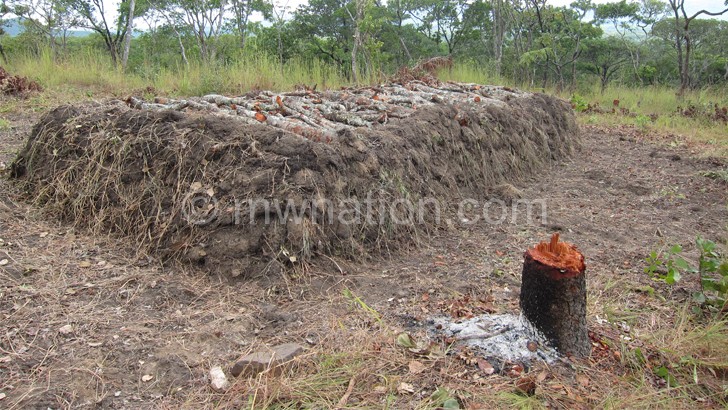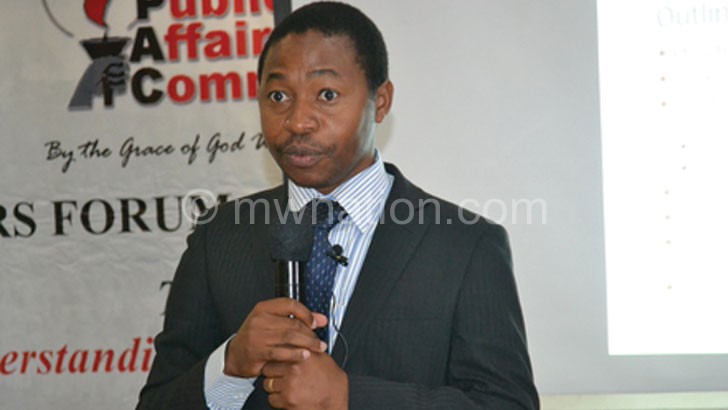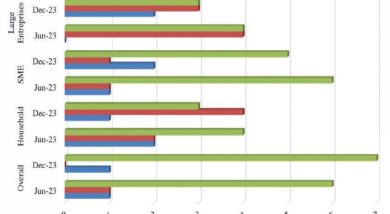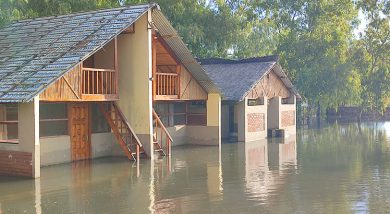Efforts to tackle Dzalanyama degradation
In this final part of the series on Dzalanyama Forest Reserve, our contributor CHARLES MKOKA looks at the collective efforts by stakeholders to remedy forest depletion in Dzalanyama.
Due to illegal and wanton cutting down of trees mainly, for charcoal production, Dzalanyama Forest Reserve in Lilongwe has lost most of its species abundance and distribution in recent years.

No wonder, the Department of Forestry, Ministry of Natural Resources, Energy and Mining, Lilongwe Water Board (LWB) and Japanese International Cooperation Agency (Jica) are jointly implementing the Conservation and Sustainable Management of Dzalanyama Forest Reserve (Cosama-DFR) that started in August 2016 through to 2021.
The project’s long-term plan is institutionalised structure harmonised with relevant government’s policies. The purpose is to develop the environment for conservation and sustainable management of the reserve.

Filling the energy gap
Cosma-DFR chief adviser Takaki Toyoda notes that the challenges in Dzalanyama can first be tackled by addressing the drivers that are creating the demand for forest products such as wood and charcoal.
“In order to conserve Dzalanyama, we need to tackle the drivers to energy issues. What is leading to the illegal charcoal and firewood production as the main causes of deforestation and degradation of the forests, not only in Dzalanyama but also in other forest areas? These are the questions we must address,” he says.
According to recent results from a charcoal and firewood market survey by the project, the number of charcoal sellers from Dzalanyama has been decreasing in the markets in Lilongwe City from 69 percent in 2015 to 63 percent in 2016, and 40 percent in 2017.
But charcoal from other locations has increased exponentially in Lilongwe City markets.
Even though the target of the project is restricted to Dzalanyama and surrounding watershed areas, Toyoda believes it is important to take forest conservation in other areas as an important issue.
“There is a need, therefore, to explore other alternative energy sources such as electricity, liquefied petroleum gas, briquettes, pellets to address the drivers of deforestation and make them readily accessible,” he says.
Toyoda explains that is why the project is promoting legal and sustainable charcoal production to meet the high demand of charcoal in Lilongwe city.
“The legal and sustainable charcoal production is; we use the artificial forest which is managed under adequate silviculture technique as a raw material for charcoal, instead of using natural miombo woodlands. This activity is aligned with the strategy.
“It is an important experimentation to coping with conservation of Dzalanyama Forest Reserve. And consumers, that are mainly the city dwellers, also need to change their behaviour, and shift to start using charcoal made by artificial forest wood in order to conserve natural forests, and get the ecosystem benefits such as water which is life,” he says.
Interventions in progress
Prior to the project commencement, Office of the President and Cabinet directed the emergency deployment of the Malawi Defence Force (MDF) with the financial support from LWB which supplies the water sourced from Dzalanyama Forest Reserve to Lilongwe City.
The coming in of the army has brought sanity to curb the free for all plunder of resources as bicycles and other appliances brought inside the reserve illegally are seized.
Meanwhile, outreach activities underway include community mass awareness on the importance of forest conservation, livelihood improvement and forest management through creation of job opportunities in case of community forest scouts to villagers.
Other interventions such as beekeeping and ecosystem restoration through natural regeneration are also being practised. The project supports nursery establishment for seedling production.
In addition to this, it is also supporting establishment of sustainable structures for conservation of the forest with financial scheme from supporting partners such as private firms.
“To drive the conservation message home, awareness raising campaigns surrounding the reserve have been conducted in partnership with Ministry of Information and Communication Technology. So far the ministry has distributed a documentary to broadcasting houses to understand the state of forest situation where both the water and charcoal comes from to the public,” explains Toyoda.
The project aims to link up with beneficiaries both individual and companies downstream of the reserve and conservation activities on the ground led by the communities.
It is expected that contribution from beverage companies will start through eco-labeling; products branding with the logo indicating that the companies show their intention to cooperate and partner with conservation efforts of Dzalanyama Forest Reserve, by contributing certain amount of financial resources towards conservation activities.
“It is an innovating scheme, individual beneficiaries can contribute from buying the products with logo, it means even residents in urban areas can support the conservation activities of Dzalanyama Forest Reserve.
“The individuals can express their decision towards conservation by purchasing the eco-labelled products such as bottled water and honey as toying the conservation line,” he says.
Sustainable conservation
For sustainable conservation and management of Dzalanyama Forest Reserve, it is necessary to secure the funds continuously. For that, the project financial mechanism component is to examine funding sources and establish a sustainable financing system, including establishing the fund management body says Jica expert on financial mechanism, Akihito Sakurai.
“The project seeks collaboration with private firms, the first collaboration has been started from February 2018 with Zamm Investments through eco-labeling of their bottled water. Through this scheme, the company donates certain amounts of funds from the sales of eco-labeled products to go towards conservation.
“We are, therefore, looking for other potential companies that benefit from upstream of rivers and Dzalanyama Forest Reserve directly or indirectly. Such companies may be related to timber, tobacco, beverage, dairy and paper production,” says Sakurai, adding financial mechanism had visited 69 private sector institutions to drum up support for Dzalanyama conservation activities.
He explains that Cosma-DFR is trying to match these CSR proposals with the activities on conservation and management of Dzalanyama Forest Reserve and also in watershed areas.
“As a trend of this era, DOF, is starting to establish PES. We are following their movements and we also investigate the possibilities of PES as one of the project activities,” he says.
Community participation
Non-governmental organisations such as Wildlife and Environment Society of Malawi (Wesm) have also been instrumental in the setting up of forest conservation and management groups such as village natural resources management committees and championing the eco-schools project.
The eco-schools project is where learners increase their awareness and understanding of key environment issues and are encouraged to develop a passion for and ownership of the natural resources.
This is achieved through participation in classes and workshops on key environmental themes as well as practical micro projects that helps students to learn through actions.
It is hoped that having seen the challenges related to water, Lilongwe has experienced in recent times, key players will take an active role to join hands to restore Dzalanyama.





